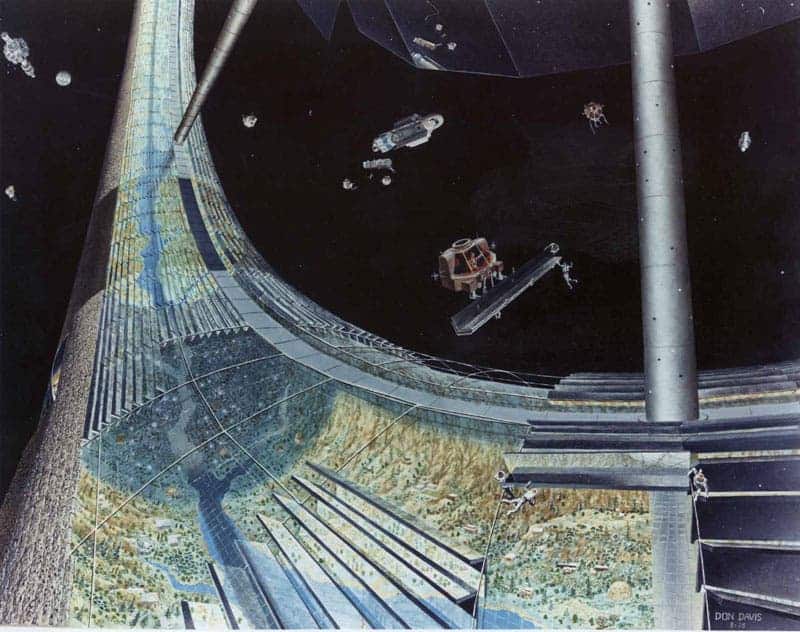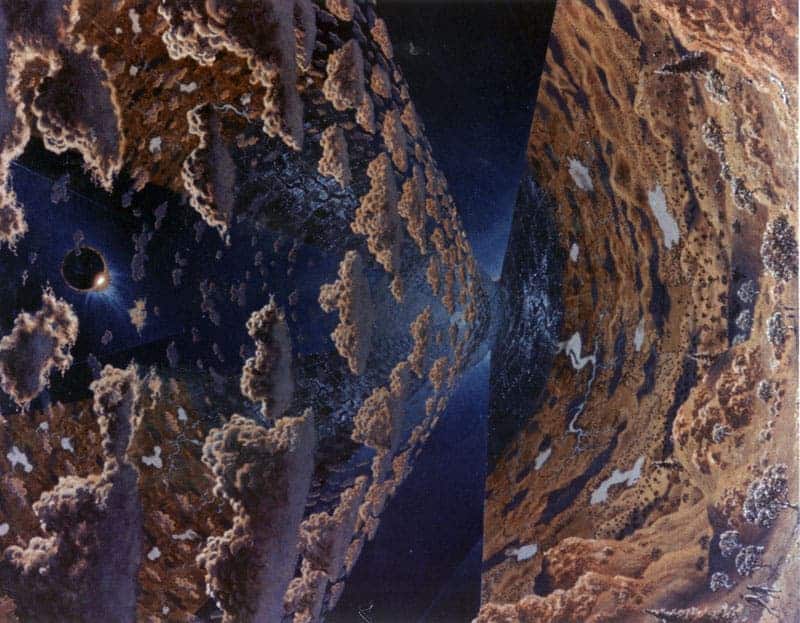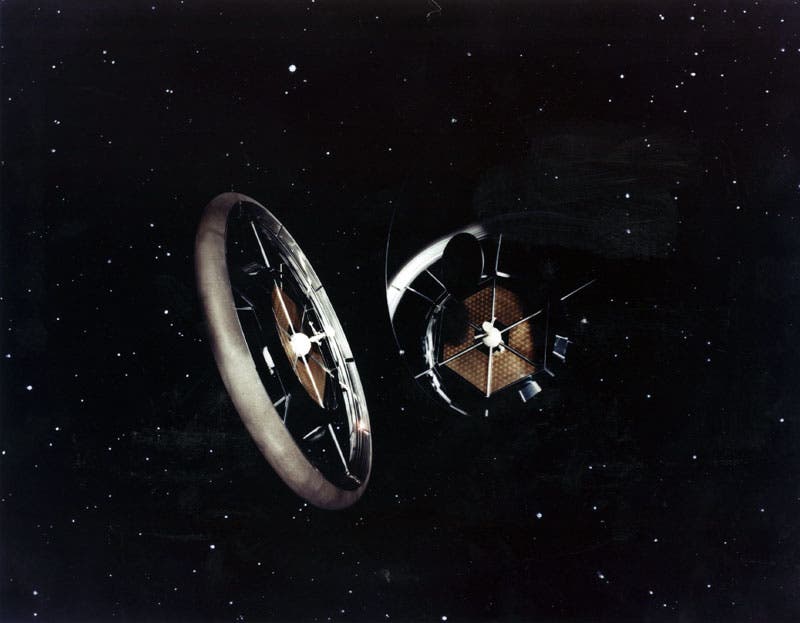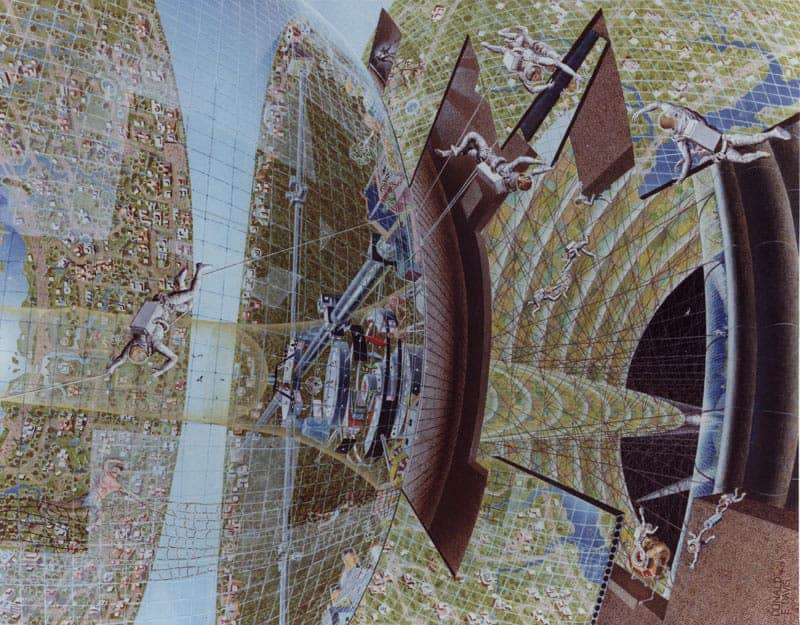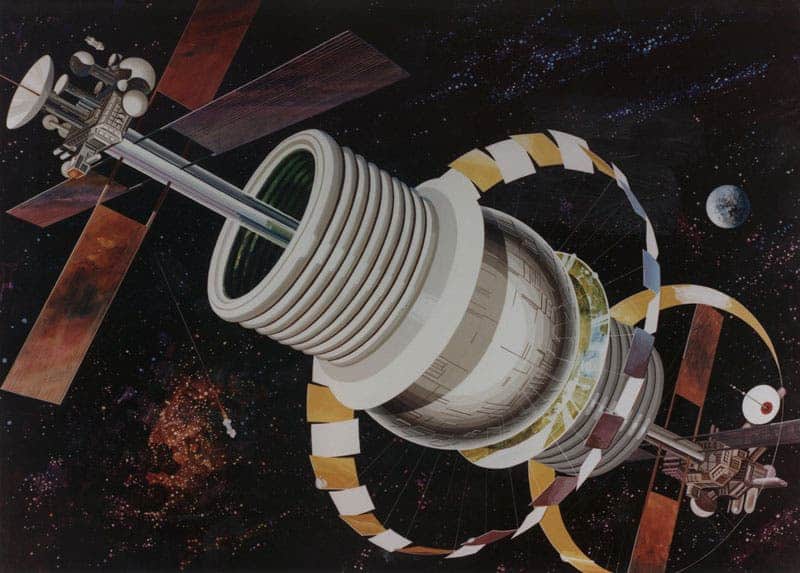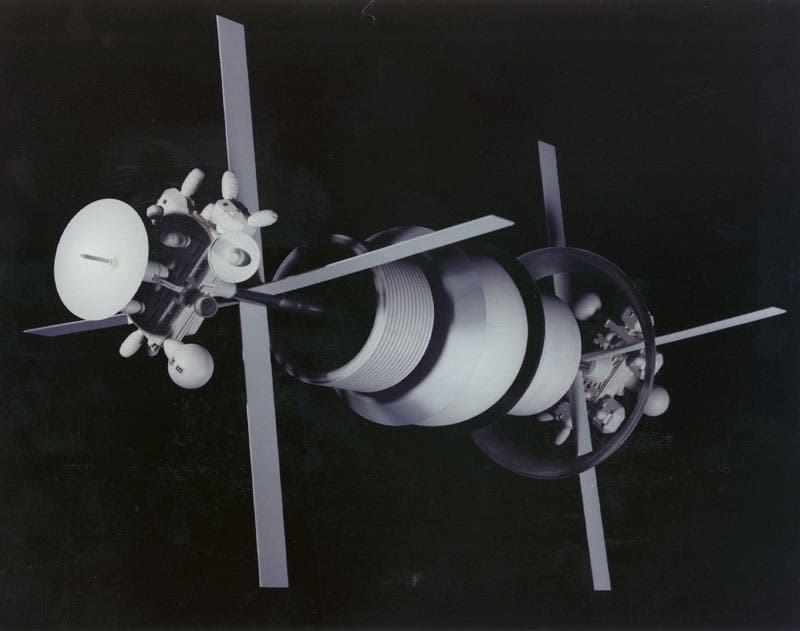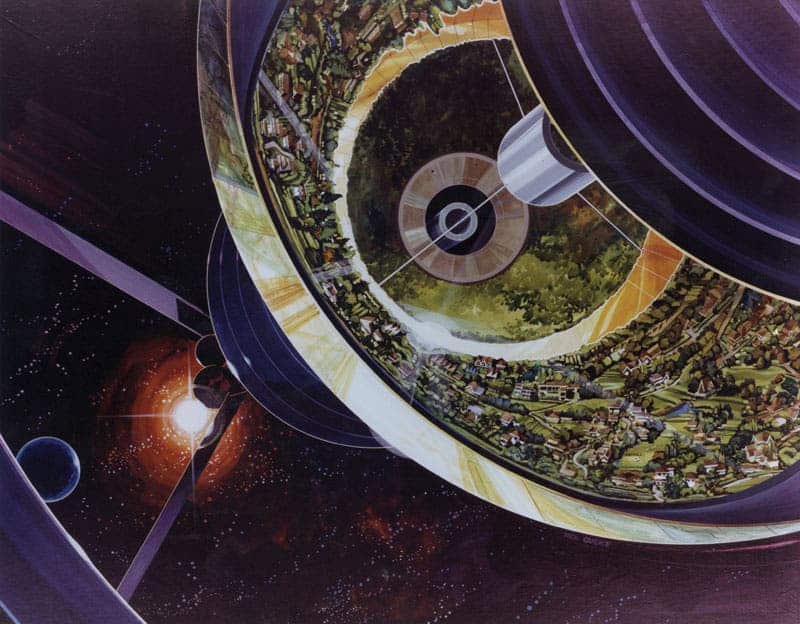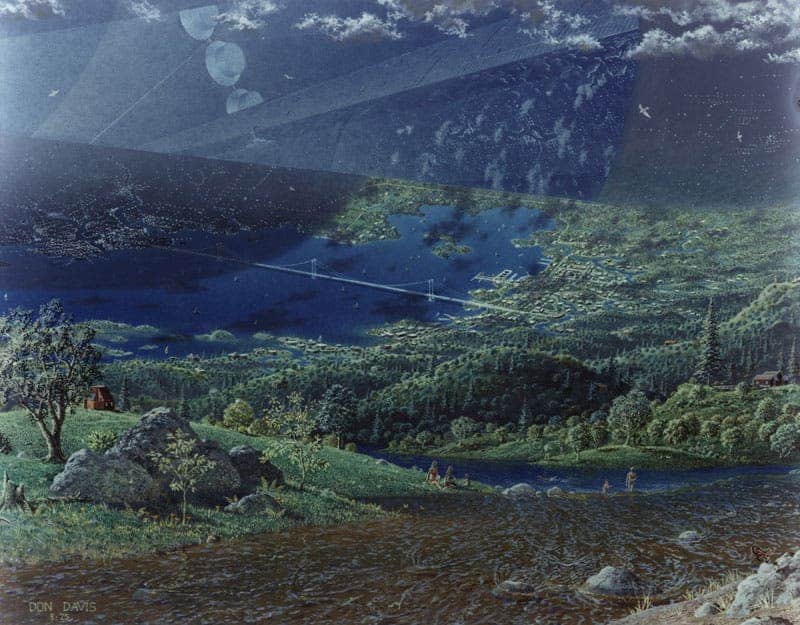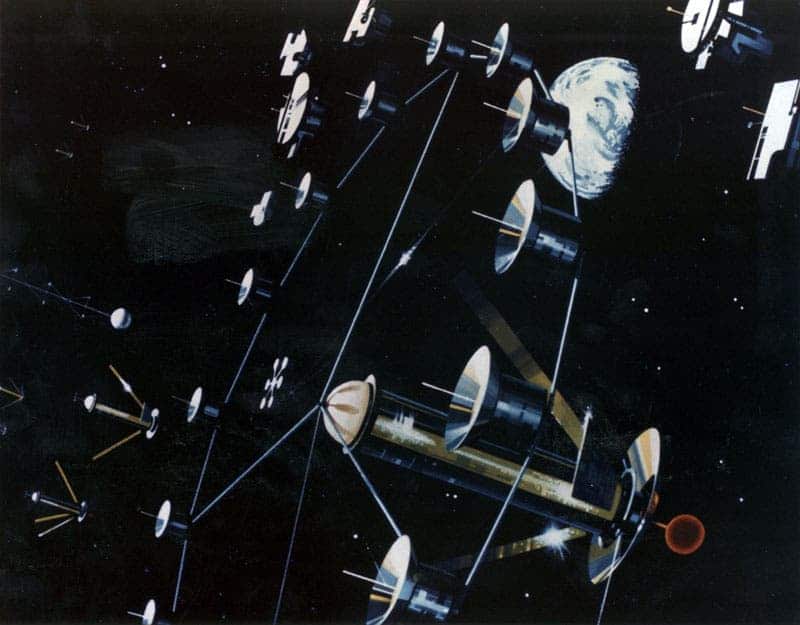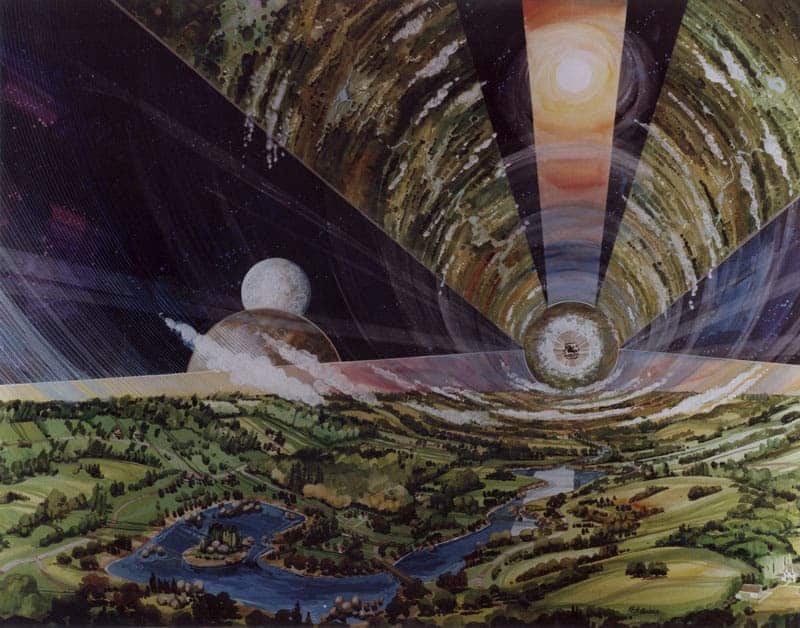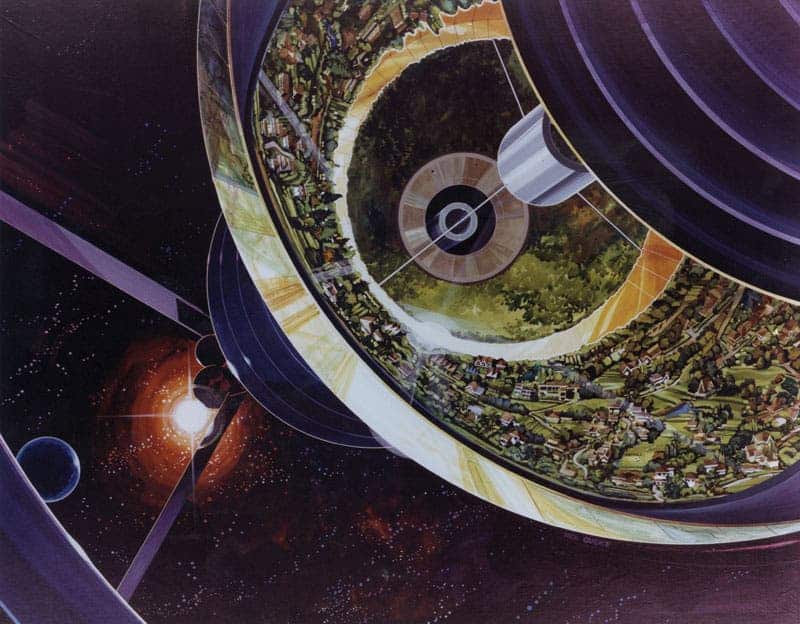In a time when a thing called the space race was in full swing, technological advance and cocky egos made a lot of people, mostly scientists, get disillusioned with visions of grander for the future. In the 1970’s Princeton physicist Gerard O’Neill with the help of NASA’s Ames Research Center and Stanford University showed that we can build giant orbiting spaceships and live in them. These space stations would have been giant enclosed-circle cylinders that housed at least 10,000 people, giant ecosystems, lakes, farm areas (with tractors plowing the fields inside the space station…), entire towns actually wrapped inside the station.
Considering that in 2011, the International Space Station, which is barely closing on its 25 years completion program and costs tens of billions of dollars, looks like a big tin can compared to the stunning futuristic representations from below, one could think that people were a bit ecstatic concerning the 2000s back then. But that doesn’t really matter, since the image gallery below not only offers some brilliant eye candy to feast upon, but also some intense stimulation for ones senses and spirit. I can only image how the managers of this NASA settlement project and the artists drawing it must have felt when it was finally completed.
Source: NASA via Dvice.
